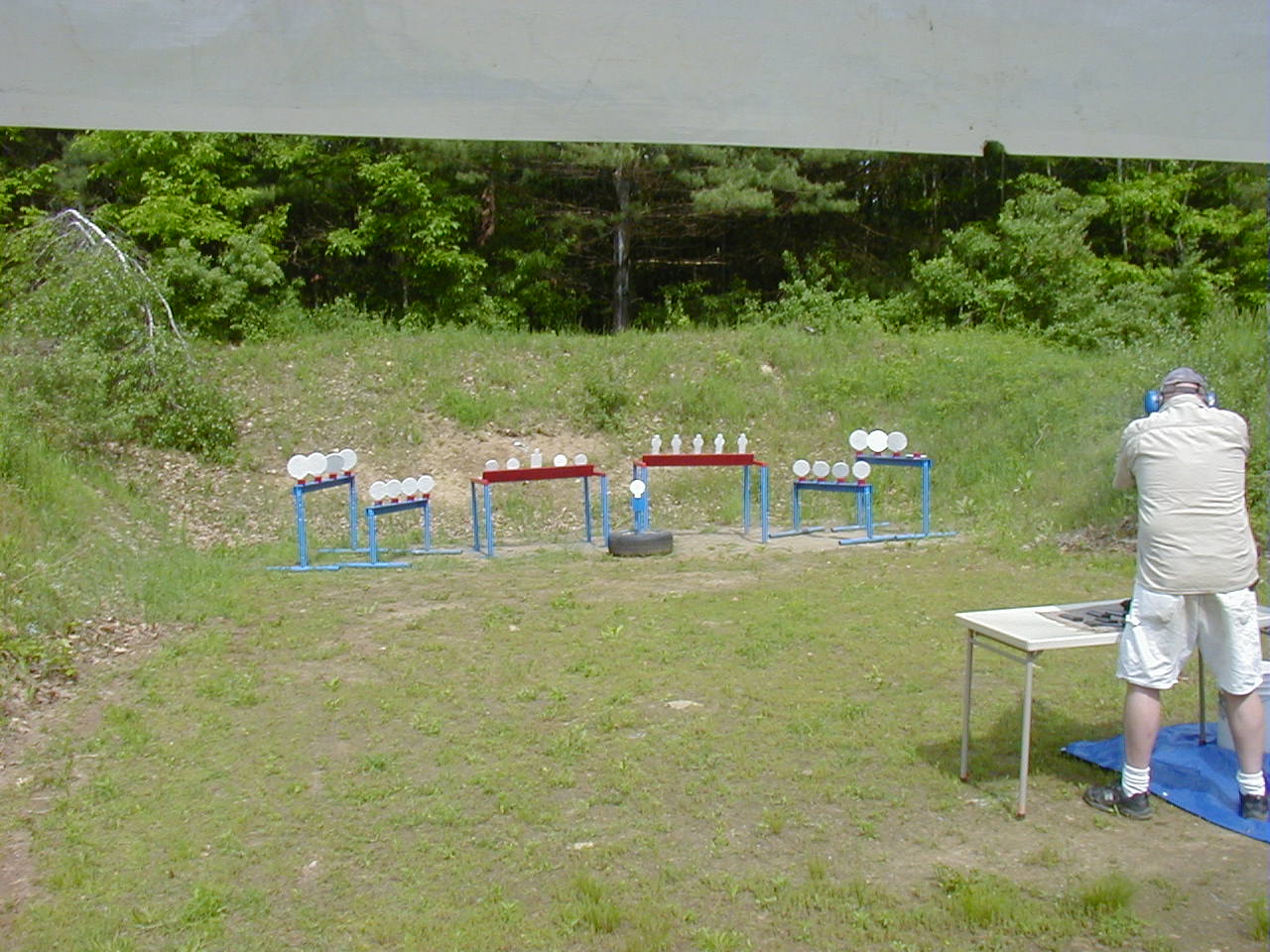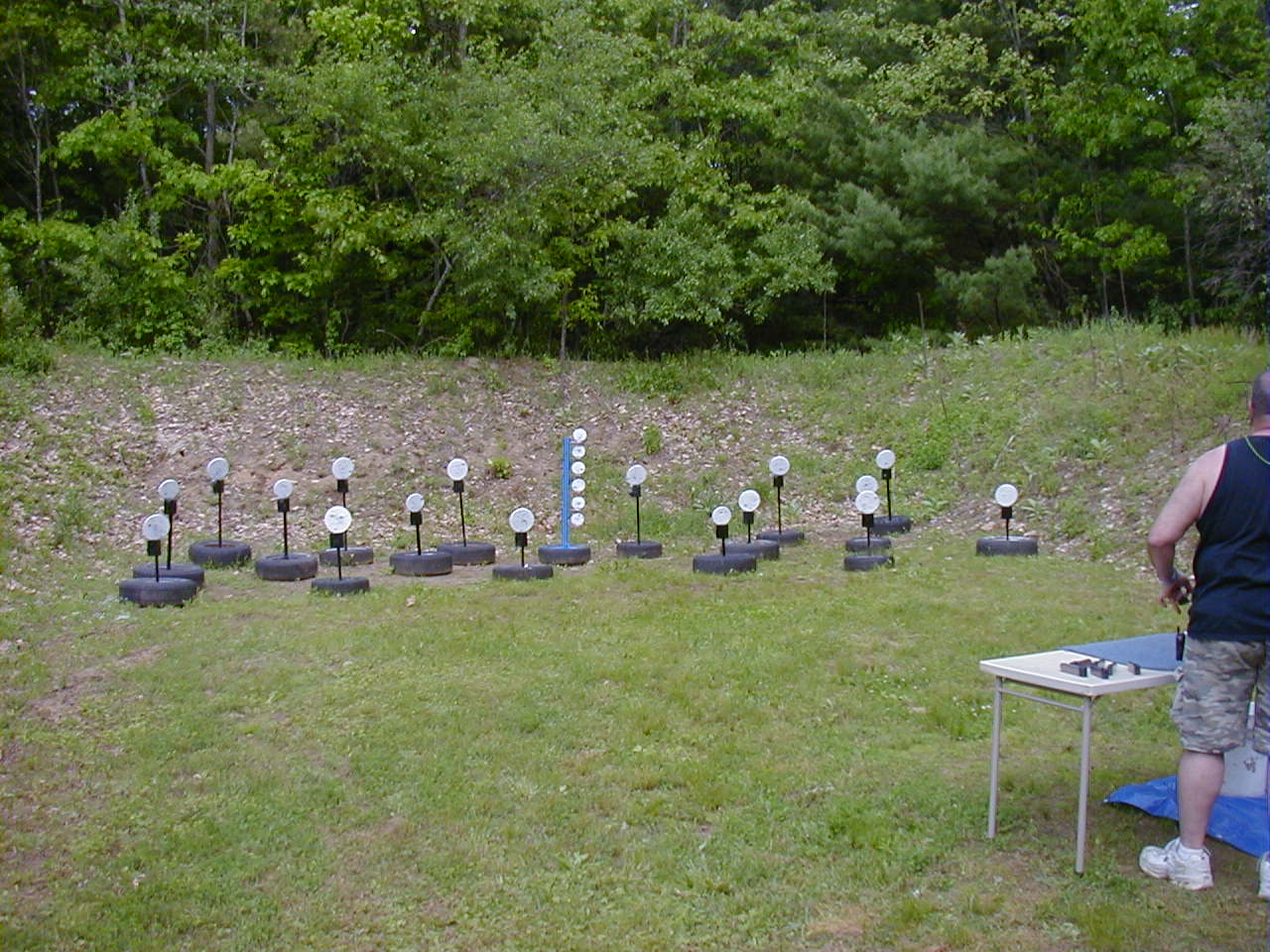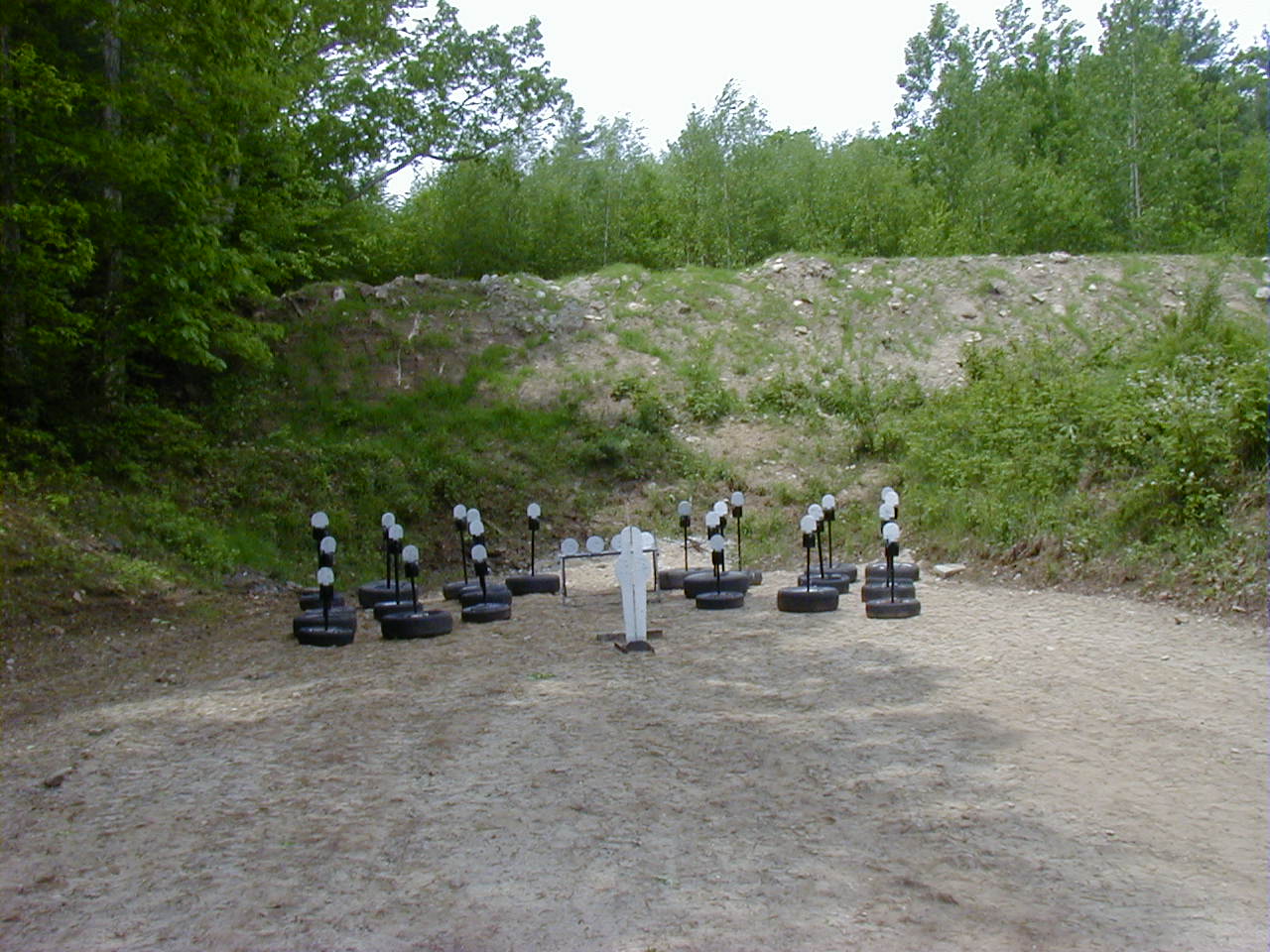Application Notes
Application Notes on Revolver Shooting
Note: This is a work in progress. If anyone wants to comment on these notes or make
additions from their experience, just send an email to AppNotes@RevolverSupply.com
and I will gladly incorporate your comments.
|
|
|
|
11. How to Spend Wisely as you get started with Revolvers June 2015
We spent the last year moving the shop and trying to keep up with demand. Now it's time to get bask to writing these application notes. If you’re new to revolver shooting and don’t know exactly how you will be competing, hold off spending money on holsters, moon clip holders and large quantities of bullets. There will be plenty of time to stock up in these areas. Instead spend your money of a competition trigger job. The factory triggers are set up around 12 pounds and feels crunchy as if there was sand in the mechanism. If you’ve bought a used revolver someone probably has been inside the workings and might not have left is in perfect condition. A good competition trigger job will cost $100 to $200 and will go along ways toward improving your shooting and your scores. Your trigger pull will be under 8 pounds and as smooth as .................. (you fill in the analogy). It will also set of you primers reliably. Then you’re ready for some real practice. You can structure that practice for the event(s) you’re planning to shoot. |
|
|
10 Slugging the barrel --- Sizing your bullets. June 2014
We have just started offering bullets specifically for revolvers. And they are available in different sizes. What's with that? What size do I need. For best accuracy and performance you want a bullet that is just the size of your barrel; no bigger or no smaller. The simplest method is to take a lead bullet (not jacketed) and force it through the barrel with a wooden or brass dowel. When the bullet comes out it will haven taken the shape of the barrel. measure across the widest part of the bullet and that is the size of your bullets. For example the S&W 627 chambered in 38 Super had the barrels made on the 38/357 production line. So the barrels slug at 0.358" and you want the bullets you purchase sized to that same 0.358". Normal 38 Super bullets are sized to 0.357", and remember only accurate guns are interesting guns. Good Luck. |
|
|
9. Smith & Wesson Factory Tour April 2012Just finished a tour of the Smith and Wesson factory. I was very impressed to say the least. Most of the tour was in the revolver area and that was a blast. To see the guns I love being created was a perfect tour. We started with an introduction and a don't touch anything speech buy a great guide that tried to be a hard ass. It didn't work. The kids in our group kept him busy and we could touch everything in reach. After the introduction we went to an in house museum where there was a small but great snap shot of historic guns. Models that failed and ones that became famous. One side of one case was valued at over $5,000,000 (4 guns). From inside the museum you can watch a master engraver working on a X frame revolver. We were able to enter his shop and interrupt his work. Everyone in the group was in awe of the craftsmanship on display. I ask him what he did in high school, did he doodle and get in trouble. His sheepish grin was the tell that he was just a regular fellow. I pointed out to the kids in our group that they could be doing that job. Master Engraver for S&W. All they need to do was doodle and get in trouble in school. You should have seen their eyes light up. We walked through tunnels into the frame manufacturing area. Starting with a round bar, frames were hammered out using progressive dies each with more detail. Tabs were in this process left for tooling holes to fixture the parts for further machining. You could see the frame taking shape. We saw the different types of materials (Steel, Aluminum, Scandium) hammered into a frame. Next we came upon the heat treating areas. Here metal was first heated and then cooled to obtain the strength and flexibility needed for the application. The deburring area was in between the heat treating and metal finishing areas. Large vibrators with ceramic stones cleaned and polished the gun parts. In the metal finishing area different types of plating, anodizing and other metal finishes were all taking place. Back through a tunnel to the revolver CNC area. Now were talking. $2,000,000 CNC machines running 24/7/365 and lots of them. Probably 50 to 100 and remember we only talking revolvers. The shop is running non-stop and a starting CNC operator earns $35 per hour. We saw round stock going in at one end of a CNC machine and cylinders coming out the other. Most of the operators checked the critical dimensions of each part as it came off the machine. Little on no scrap was being produced. We next entered the room where the cylinders were polished. The flutes were done by hand but the outside surface was done by a robotic arm and various belts. The parts we saw being worked on did not have a polished finish but the buffing wheels were in the room all within reach of that robotic arm. We walked through barrel manufacturing. Barrels from 1 inch to 8 inches were being run. My pockets were getting filled with all the parts I was picking up and saving while the kids distracted the guide. I had no idea how all this was getting past the metal detectors that lied ahead. Yes metal detectors coming in and the same going out. Don't know how much jail time I was facing but all those revolver parts were just lying there, calling to me. The factory part ended in the assembly area. We had just passed the performance center assembly area. We then ended up in again in the meeting room where we handed back the safety glasses and I returned all the parts I had collected on the tour. I could not ever work there. There would be no time for shooting!! If you're ever in the Springfield MA area, it would be well worth arranging for a tour. Just remember to call ahead and set it up. |
|
|
8. Cleaning SolutionHere is a LINK to a write up on Ed's Red. This is the cleaning solution I use but I leave out the Acetone. Also remember I'm shooting hand loaded rounds using either jacketed, copper washed or a moley coated bullet not an un-coated lead based projectile. That in itself keeps things cleaner. For those of use verbally challenged (like me) here's a LINK to a video. When I make a batch I use the containers on the original products for storage not a glass Mason jar. Search the internet for Ed's Red and you'll find a lot more information. Look this over and tell us what you think.
|
|
|
7. Lightening the Double Action Trigger PullThe next step on the agenda for these 2 guns is to lighten up the double action trigger pull. Presently I'm using Winchester primers and have these set so that they are 100% reliable. Trigger pull as of May 2011 Revolver Open 7.5 lbs 7.5 lbs Changes:
|
|
|
6. Mini Walls Of Steel May 2011Great even as usual. Guns functioned flawlessly. Scores aren't up as of yet but have the feeling I was slow. Below are pictures of the stages and some video's of me shooting on some of the stages. Comments always welcome.
Stage 1 Stage 2 Stage 3 Stage 4 Stage 5 Stage 6 Open Rev Video Video Video Video I shot Open Revolver first and then Stock Revolver. Over 500 shots in a full day. Near the end I could no longer count to 8 and it was painful to concentrate on the front sight. I'm exhausted. And the scores are posted. LINK |
|
|
|
|
|
|
5. 38 Super - Falling Plate gun(s)Planning to shoot the Walls Of Steel this August. I'll probably make it a permanent entry on my shooting calendar. There is a mini Walls of Steel version of the match on the 29 May 2011 and I'm planning to use it as a tune up for the big one. I've got two revolvers that I'm getting setup. One will be for the Revolver class and the other for the Revolver Open class. They are both S&W model 627 chambered in 38 Super. These are 8 shot pistols that use moon clips. The 627 makes it easy to run with or without a compensator as the end of the barrel has a removable compensator. Here are pictures of the guns.
Here's a are the pistols and a list of what I've done to each . Standard Revolver:
Open Revolver:
Both of these are set up to work with Winchester primers. The trigger pull could be lightened if I switched to Federal's. I plan to do that after the Mini Walls. Next for the ammunition. I'm using the 135 g RN Bill Bullets sized to 0.358. This is important!! In these guns the barrels were made on a production line that makes them the dimensions of a 38/357 barrel. So you need bullets sized to 0.358 not the 0.356 that's normal for 38 Super. I'm loading either 3.4 or 3.7 grains of Clays. This gets me to a 135 power factor. The higher load produces a tighter group with a bit more power but comes with more recoil. The recoil is noticeable in testing but I bet during the match the adrenalin will cause me not to notice it. I also trimmed the cases to 0.900" in length. This is a tedious task. In a previous revolver it helped a lot in the accuracy testing And finally if all goes well video of the stages.
|
|
|
4. Getting Started, The BasicsHere is a link to a good basic description of how a revolver works from How Stuff Works. It starts on page 1 of 5 pages. Be sure to look at all the pages.
|
|
|
3. Name those PartsClassic exploded view of a revolver. Original source is most likely Smith & Wesson
We want to use the proper terminology when talking about revolvers. This is a good starting point.
|
|
|
2. Safety:We can't talk about how to get started with shooting a revolver without covering safety. Training in basic firearm safety is a must. Most states require you to have proof of formal training in this area. If you inherit a pistol and have not had any safety training....STOP immediately and get some. No club, public range or match will put up with an unsafe shooter. The NRA offers a pistol safety class given by local instructors. Here's a link to find an instructor and classes in your area. Select the class you interested in, enter your Zip code and perform a search.
|
|
|
1. Selecting a Revolver:The quick answer is any one will do just fine. A better answer contains a list of features to consider. Size:Size matters. A revolver can come in many sizes, from one small enough to double as a belt buckle (Charter Arms) to one large enough to double as a sledge hammer (Freedom Arms). Both extremes are more difficult to shoot accurately but serve their intended purpose. You need to select a revolver that has a frame the will fit your grip. Now this doesn't need to be a perfect fit because you can change grips, wear gloves and cut and file on parts to make the fit better.
Barrel Length:Once you've narrowed down the frame size consider barrel length. Long barrel 8 inches or more are great for hunting or other long range activities. Barrel that are very short say 2 inches are great for carrying purposes. Some sports define a maximum barrel length (IDPA 4 inches). The longer barrels offer a longer sight radius and are easier to shoot at distances. The shorter barrels are easier to maneuver and move from target to target.
Caliber:Revolver calibers range from .17 HRM to the .500 S&W. The smaller calibers are more economical to shoot. Current prices for 500 22 long rifle at at ($6-$7 per 100 rounds) and Winchester 9 mm ($100 per 500 rounds). These prices are as of when I'm writing this so do some searching on your own.
The most popular caliber for reloading die sales used to be 38 Special/ 357 magnum. The reloading dies can be used for both calibers. I'm not sure that caliber is still on the top of the list. The 9 MM has been adopted by law enforcement agencies and has become very popular.
"Only accurate guns are interesting guns" by Townsend Whelen. In the long run you will enjoy shooting your more accurate revolvers and you will probably get rid of your not so accurate revolvers. Some calibers and revolver combinations are designed to be more accurate than others. Most calibers can be made to be accurate but some are a lot of work.
If you intend to shoot falling plates, bowling pins or compete in matches hosted by IDPA, USPSA or ICORE, you'll need to consider something called power factor. Power factor is bullet weight in grains times muzzle velocity in feet per second divided by 1000. Different matches give different scoring (more favorable) to higher power factor cartridges. It's impossible to knock down bowling pins or steel with 22 long rifle. And 44 Magnum is too much of a cartridge for an ICORE stage.
Reloading Method:Reloading a revolver can be accomplished by several methods. 1. By inserting a fresh cartridge in each empty chamber one at a time. 2. By using a speed loader that holds all the cartridges for an empty cylinder. 3. By using a full moon clip again holding all the cartridges for an empty cylinder. Different revolvers are designed to accept rounds from these three different reloading methods. Some revolvers are designed to be incompatible with some of the methods. For instance the S&W 626 needs to use moon clips for reloading. You can put the rounds in one at a time and fire them but the extractor will not extract the fired rounds. And the S&W 585 is not designed to use moon clips.
Purpose:A revolver selected for personal protection would probably have a shorter barrel. While one used for hunting would probably be a larger caliber with a longer barrel.
New or Used: |
|
|
|
|
|
|
Note: This is a work in progress. If anyone wants to comment on these notes just send an email to AppNotes@RevolverSupply.com and I will gladly
incorporate your comments.







